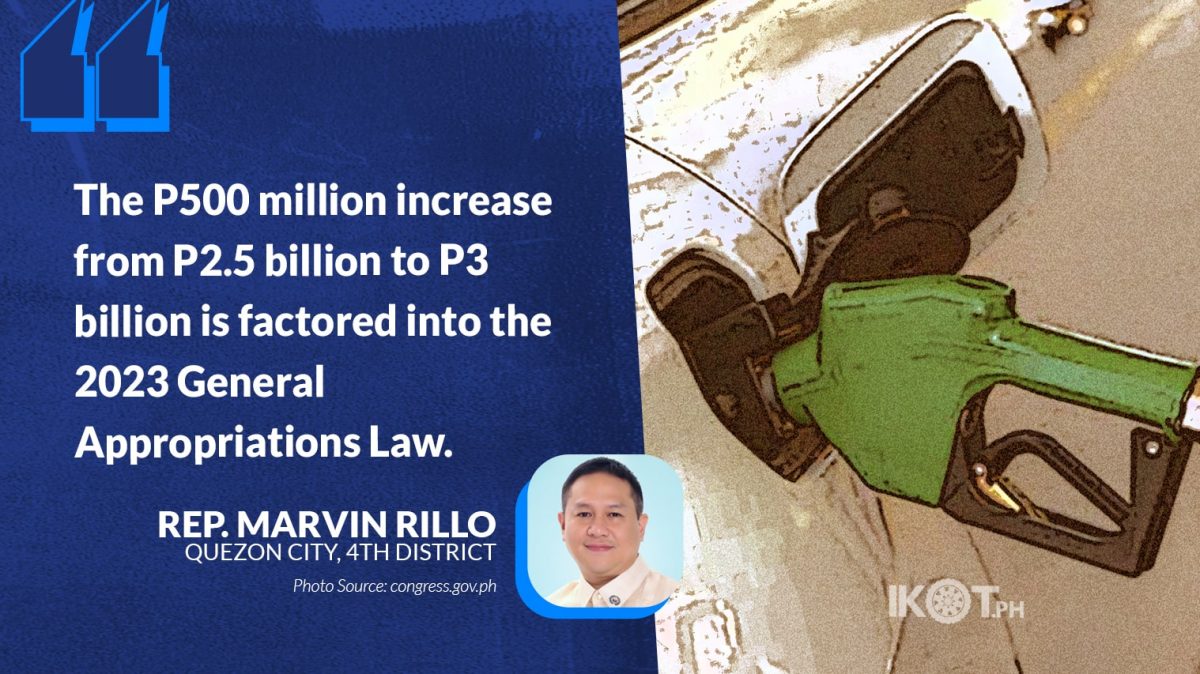Congress has increased to P3 billion for 2023 the budget for the direct fuel subsidies of public utility vehicle (PUV) drivers, Quezon City Representative Marvin Rillo, House appropriations committee member, said.
“The P500 million increase from P2.5 billion to P3 billion is factored into the 2023 General Appropriations Law,” Rillo said.
“The upward adjustment is meant to cushion a greater number of public transport drivers from elevated fuel prices.”
“The upward adjustment is meant to cushion a greater number of public transport drivers from elevated fuel prices,” the legislator explained.
The Fuel Subsidy to Transport Sector Affected by Rising Fuel Prices Program extends financial assistance to drivers of public utility vehicles (PUVs), including those providing full-time ride-hailing and delivery services.
The Land Transportation Franchising and Regulatory Board delivers the aid via cash cards worth P6,500 each issued by the state-owned Land Bank of the Philippines, or via fuel vouchers redeemable at gas stations.
“There’s really no telling where oil prices will be in the months ahead, considering that Russia’s invasion of Ukraine is still ongoing, so the government has to be ready to sustain subsidies to the most vulnerable sectors,” the lawmaker said.
He said the 2023 General Appropriations Law also includes P490 million for the Fuel Assistance to Fisherfolk Program of the Department of Agriculture (DA).
“There’s also another P510 million for the DA’s Fuel Assistance to Corn Farmers Program.”
“There’s also another P510 million for the DA’s Fuel Assistance to Corn Farmers Program,” Rillo stressed.
He explained the release of the subsidies would be triggered “when the average Dubai crude oil price based on Mean of Platts Singapore (MOPS) for three months reaches or exceeds $80 per barrel.”
Dubai crude oil futures contracts for delivery in February settled at $81.82 per barrel recently, while those for delivery in March settled at $81.25 per barrel.
In the wake of Russia’s invasion of Ukraine, world oil prices soared to more than $120 a barrel on concerns of supply disruptions. But prices have fallen sharply since then.
Russia is the world’s third-largest oil producer, accounting for 12 percent of global output.


